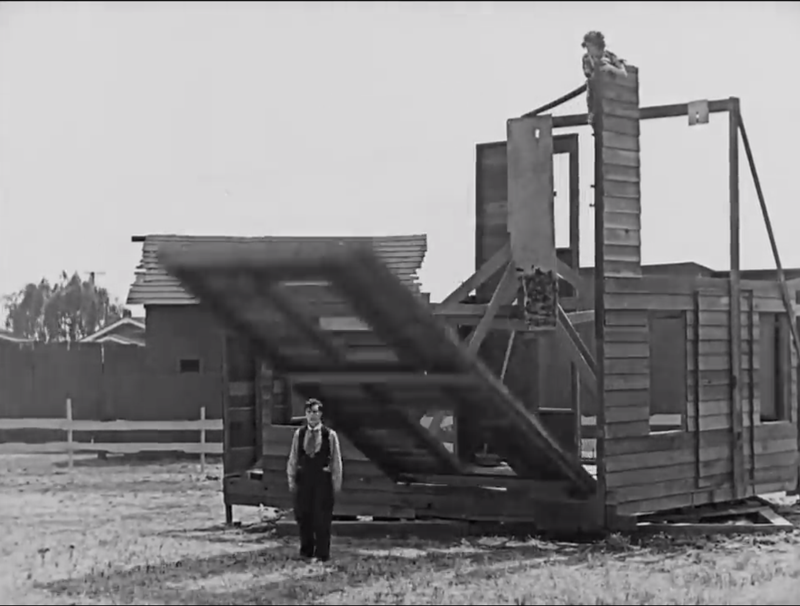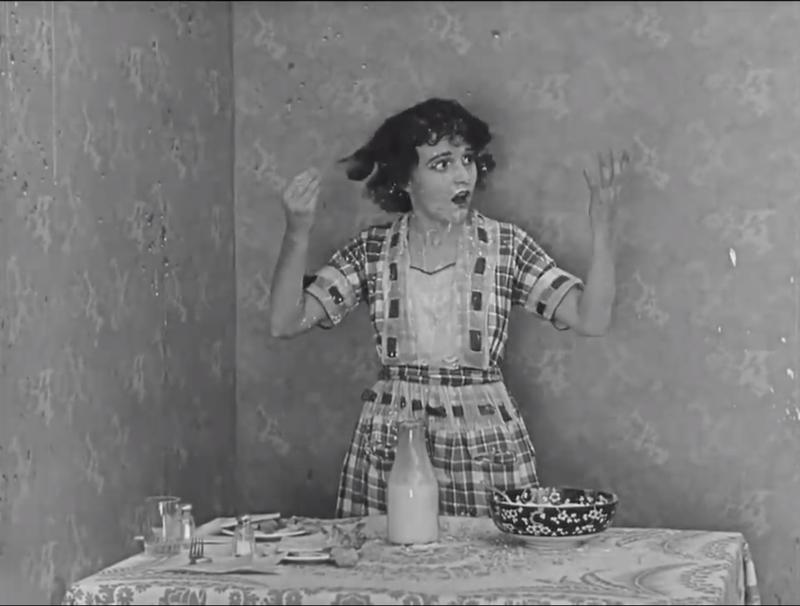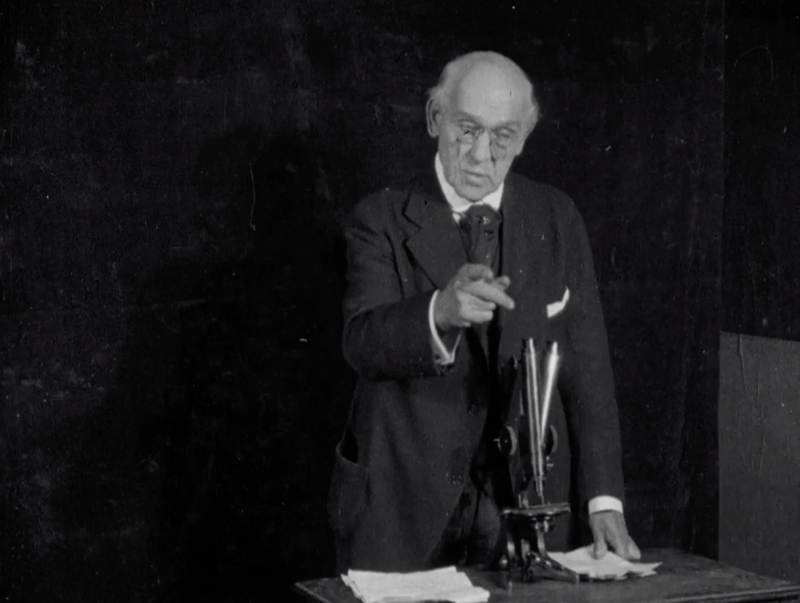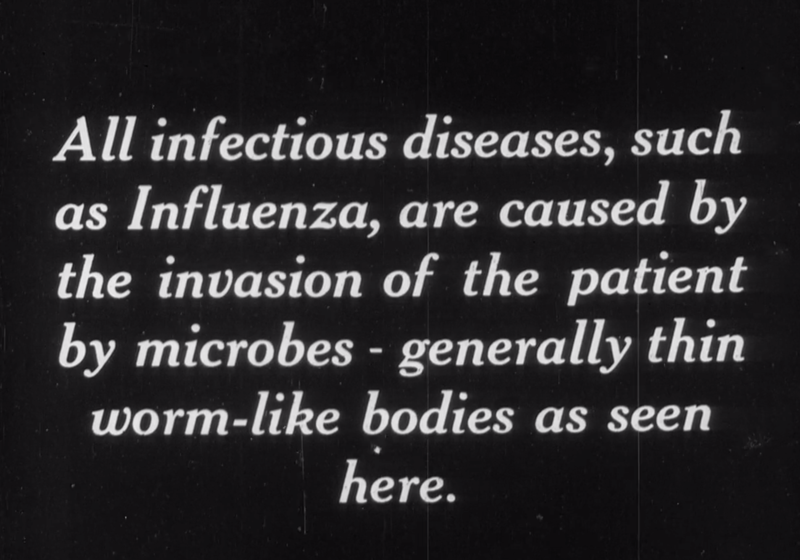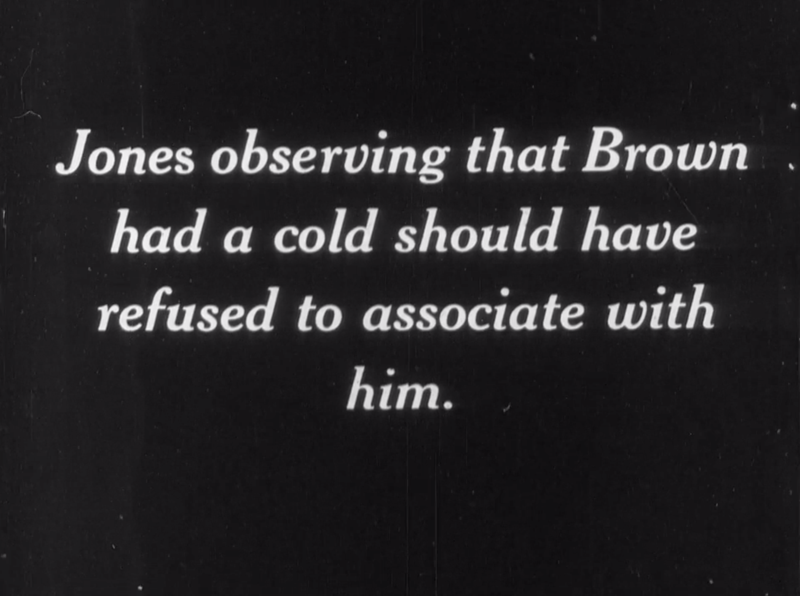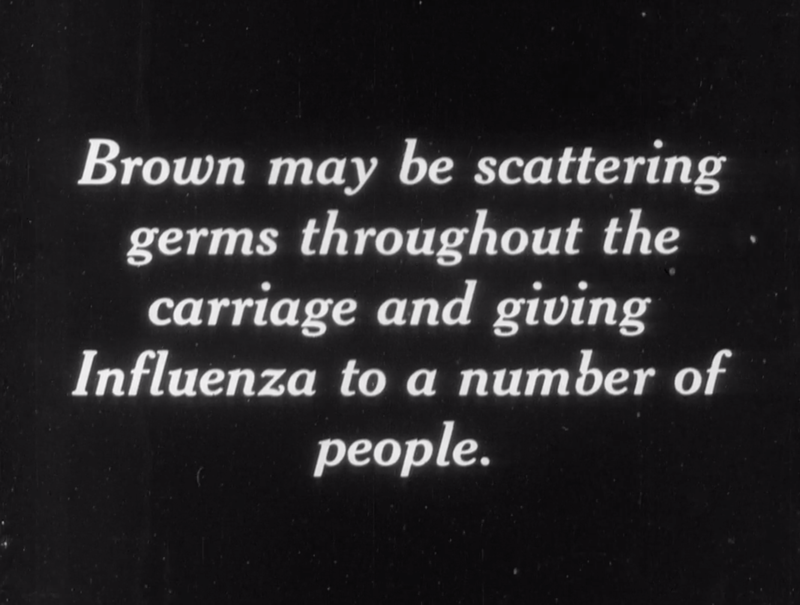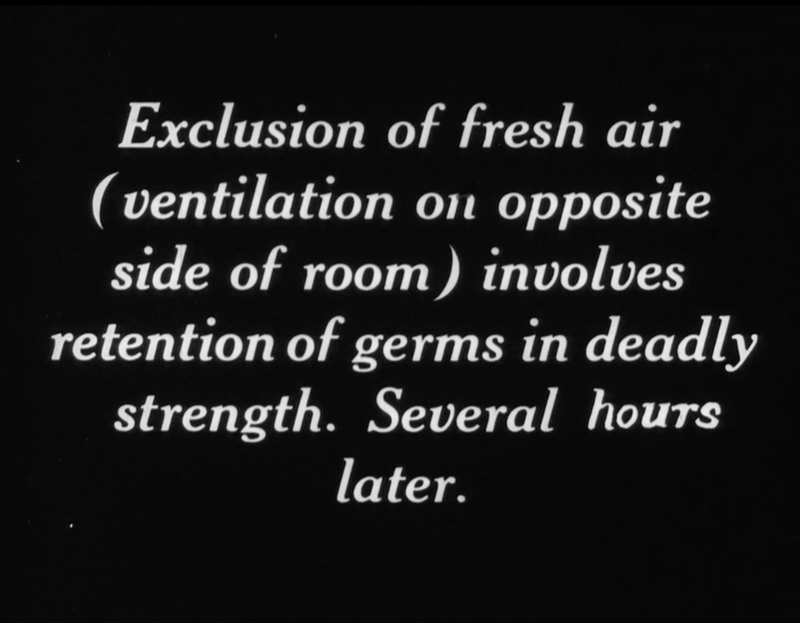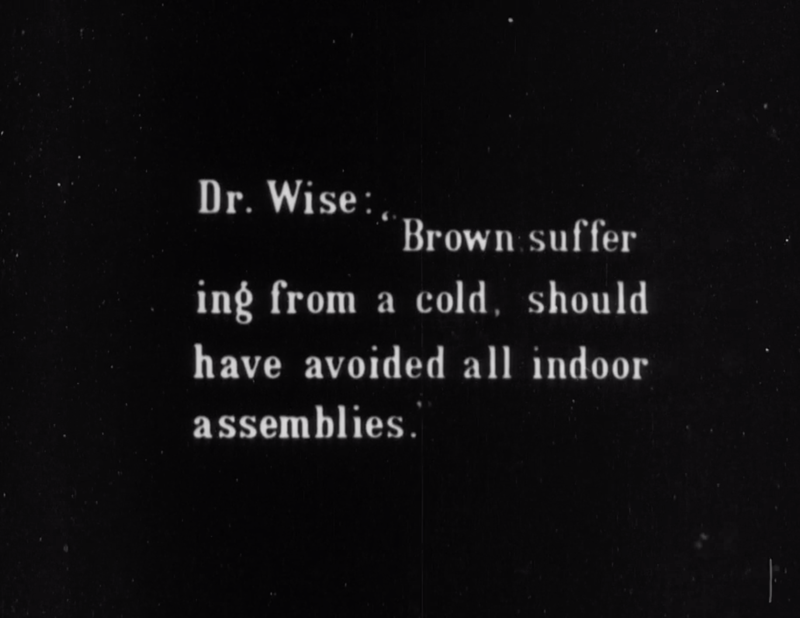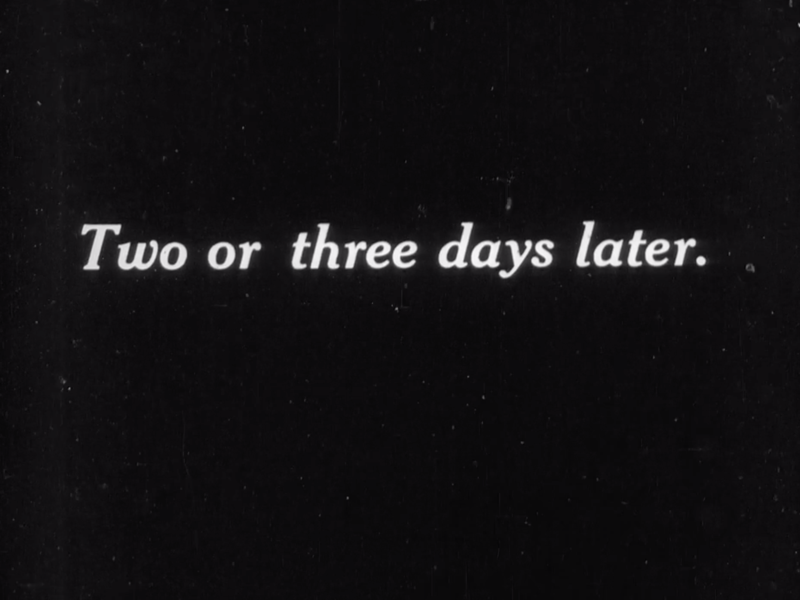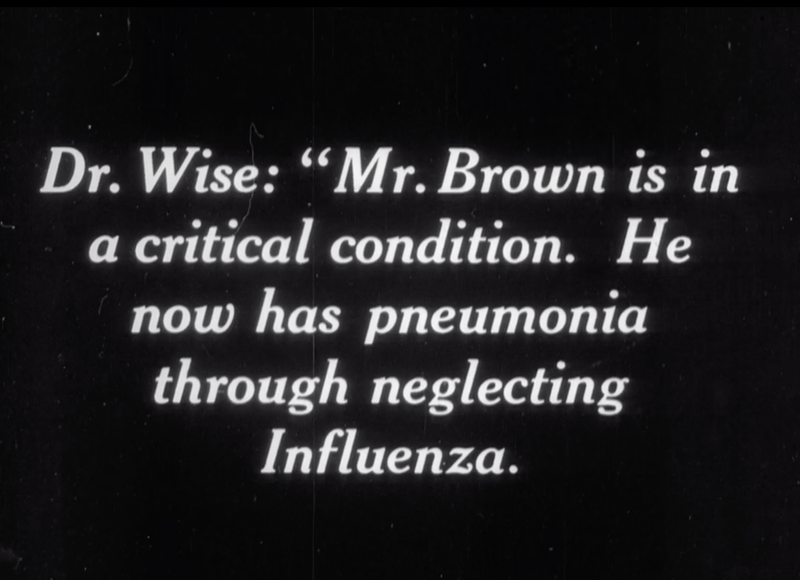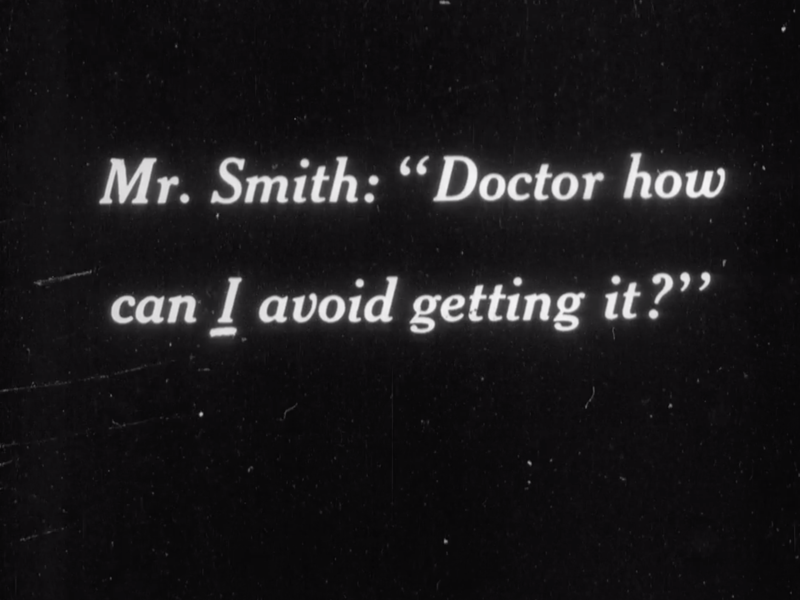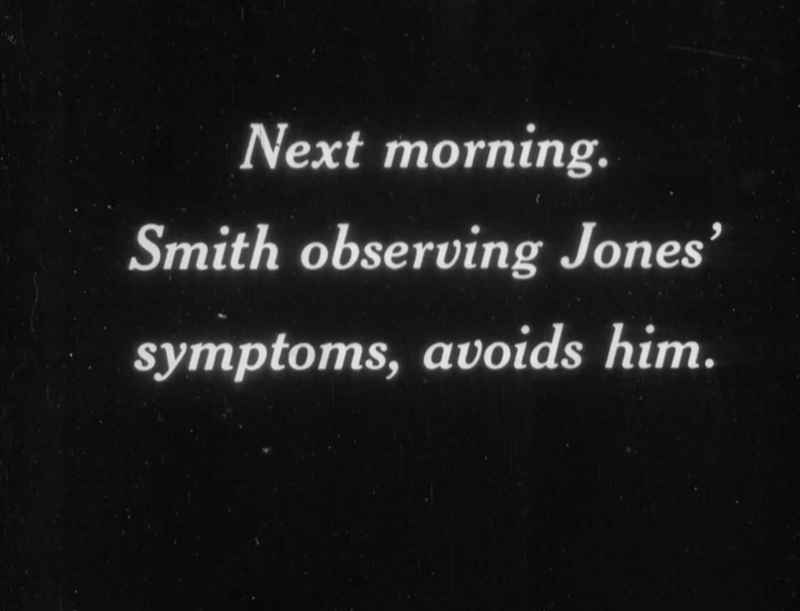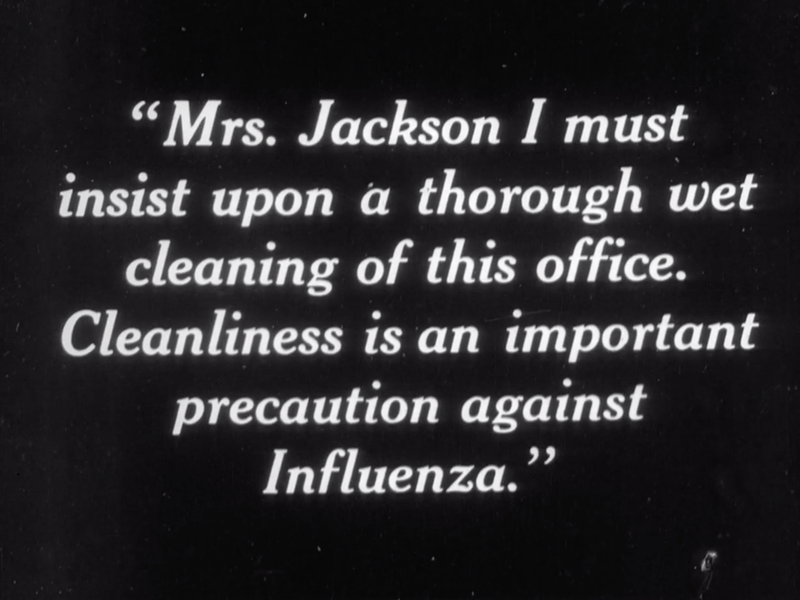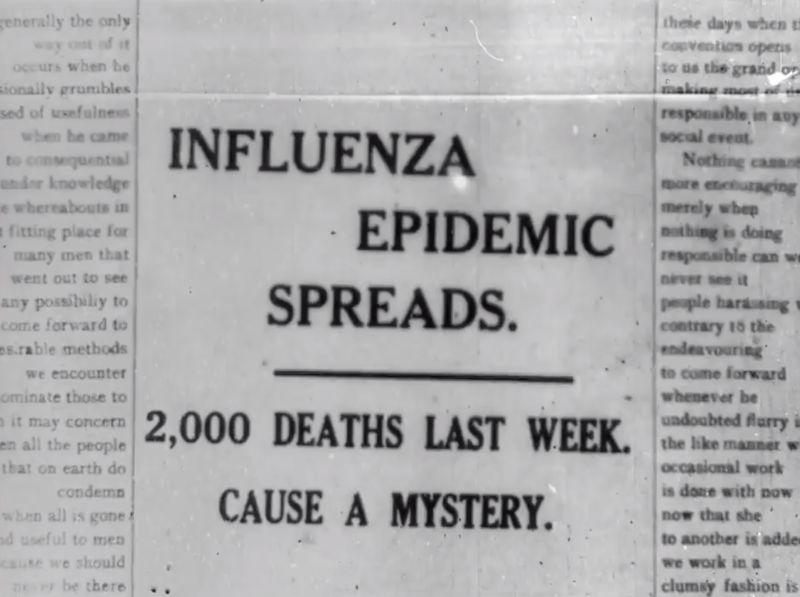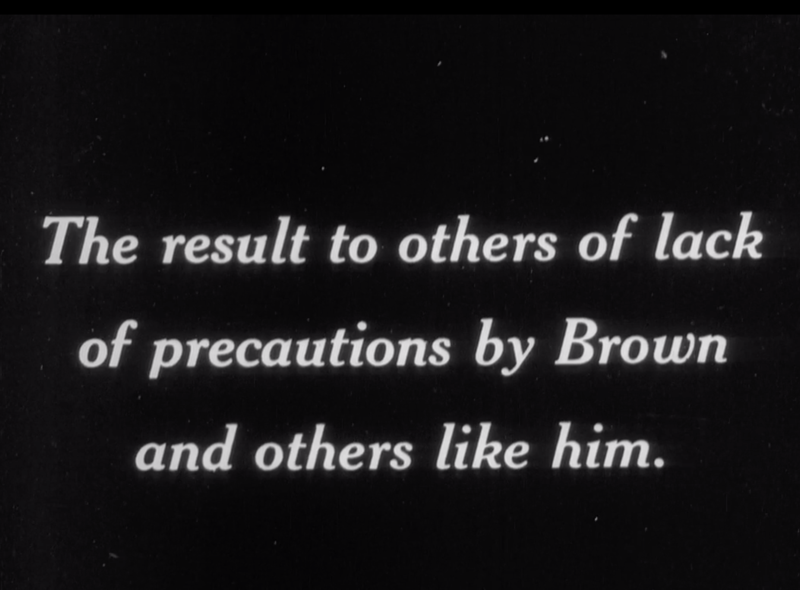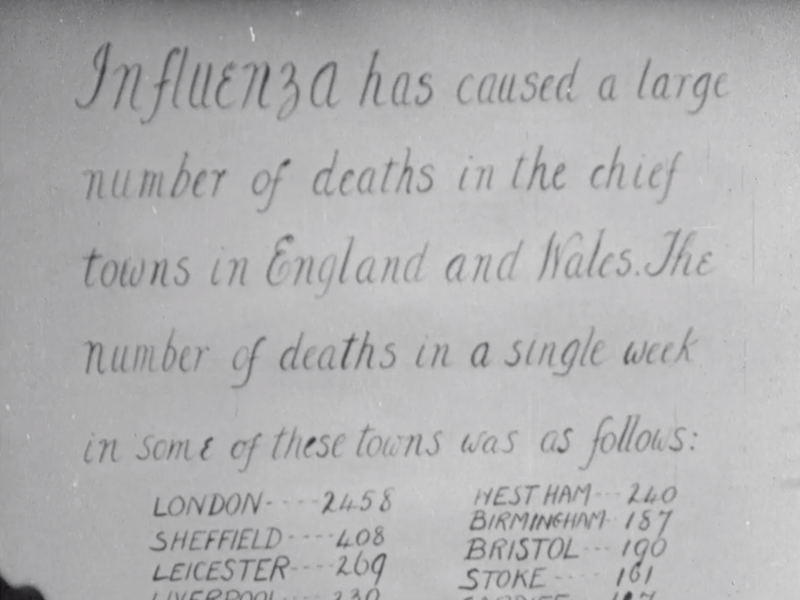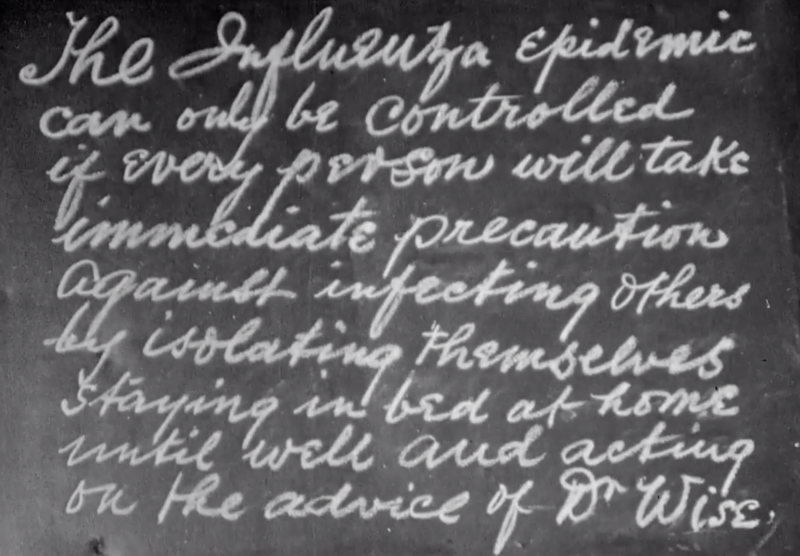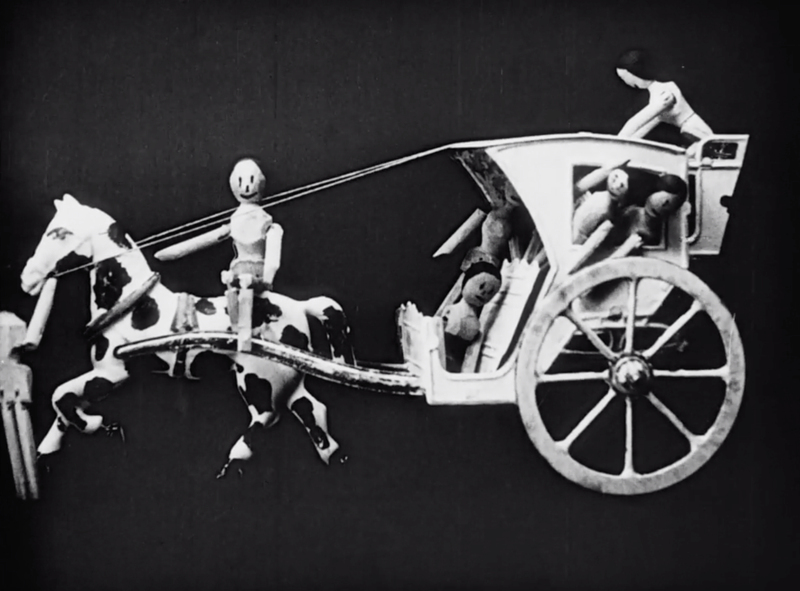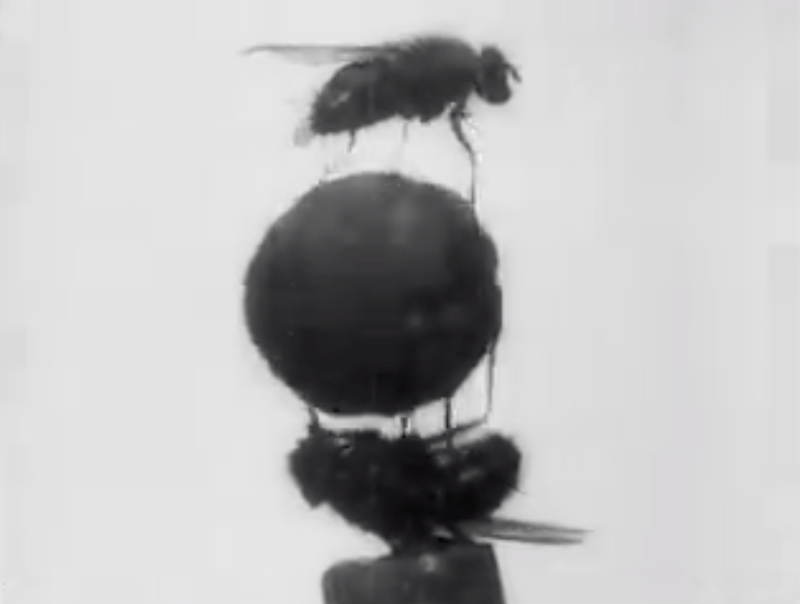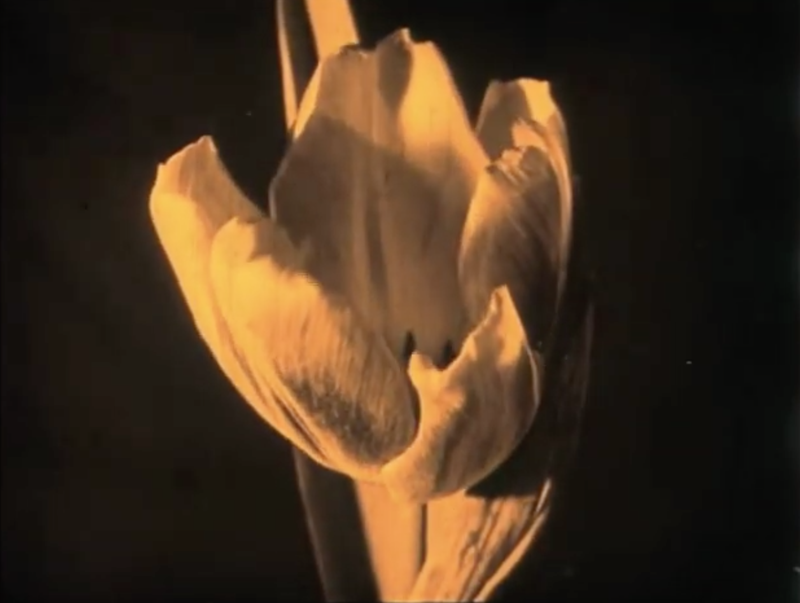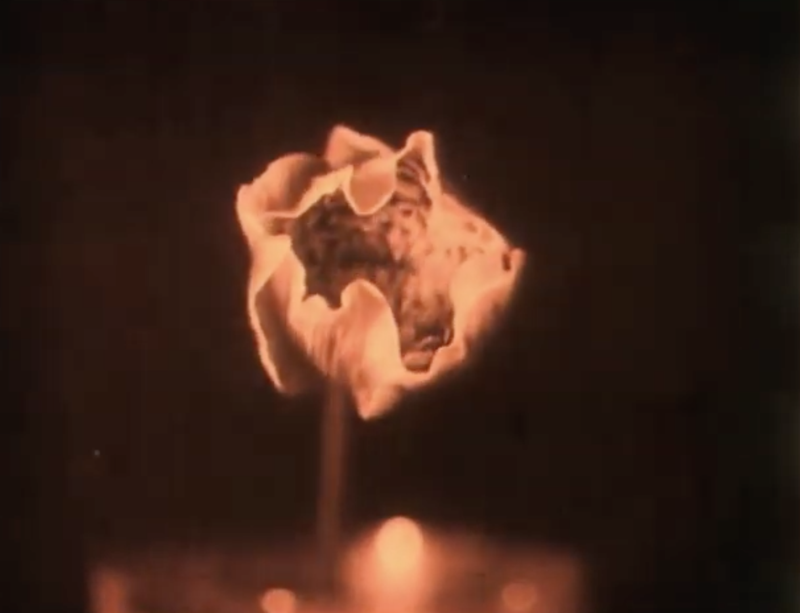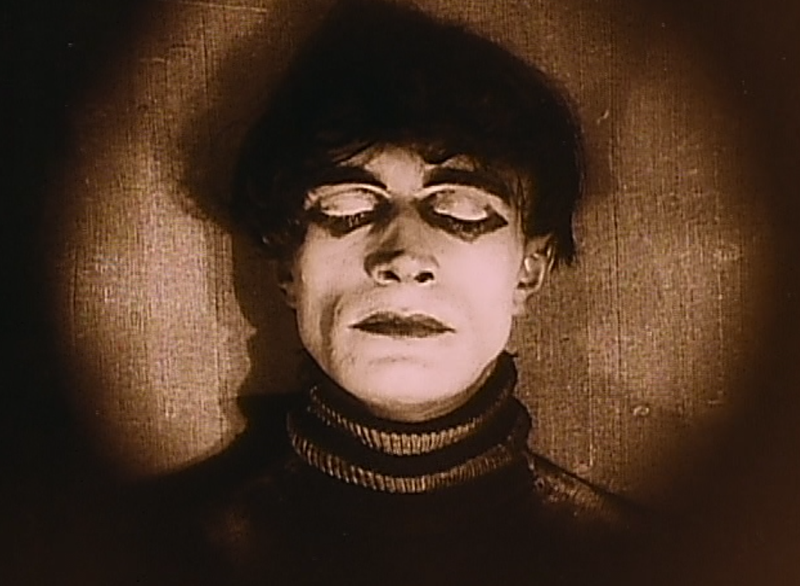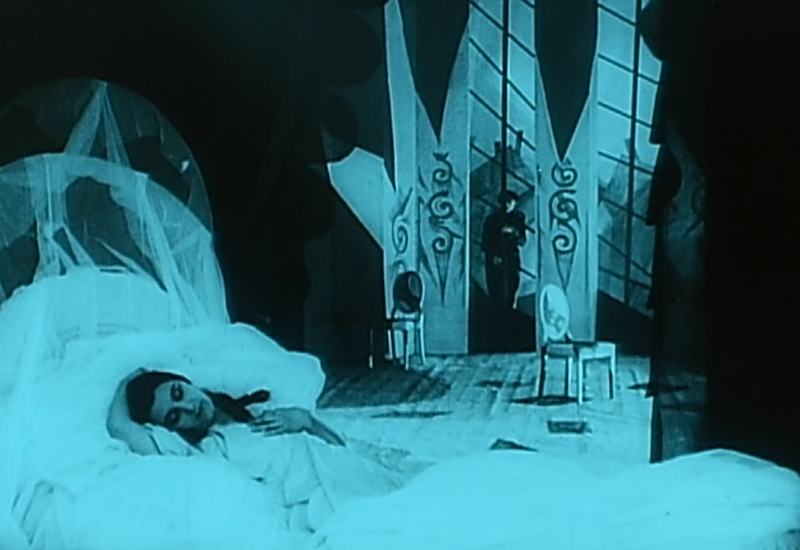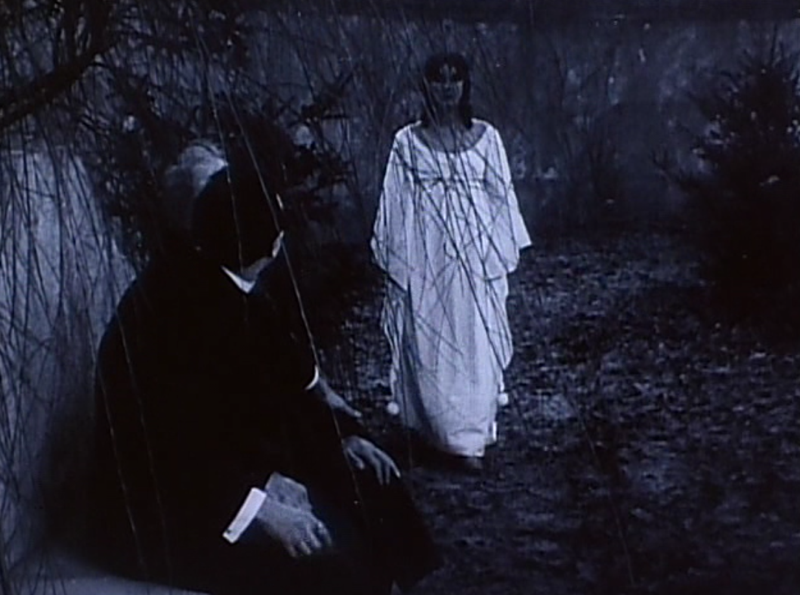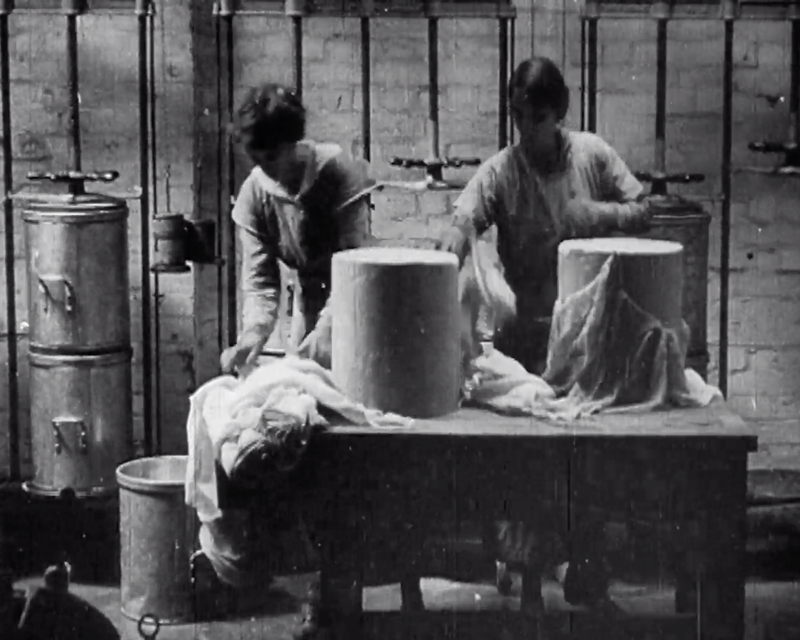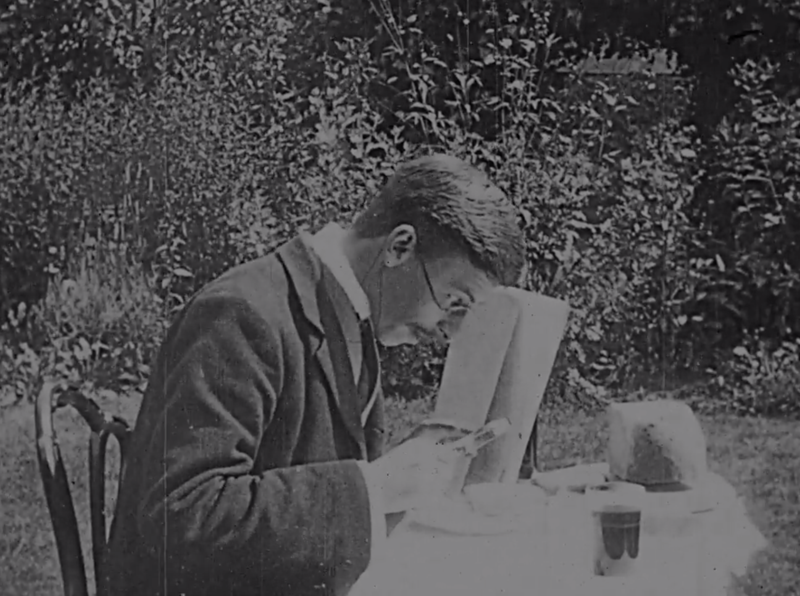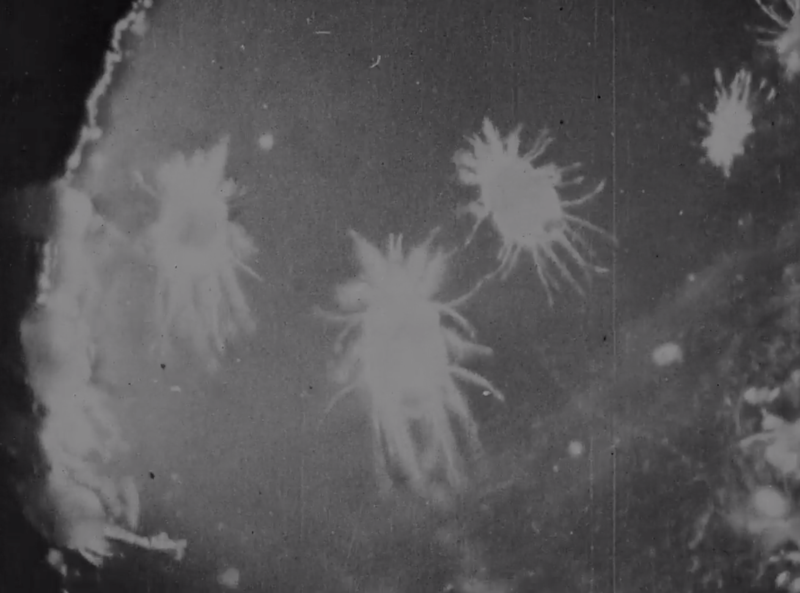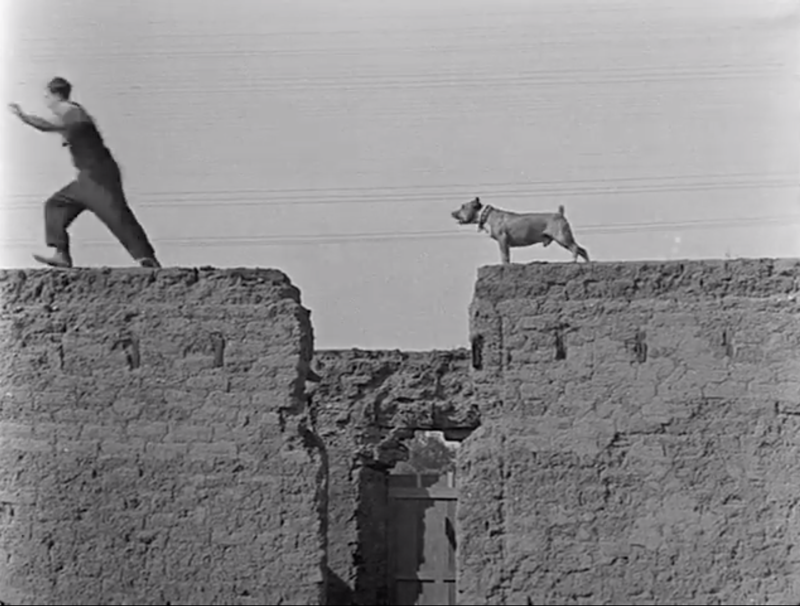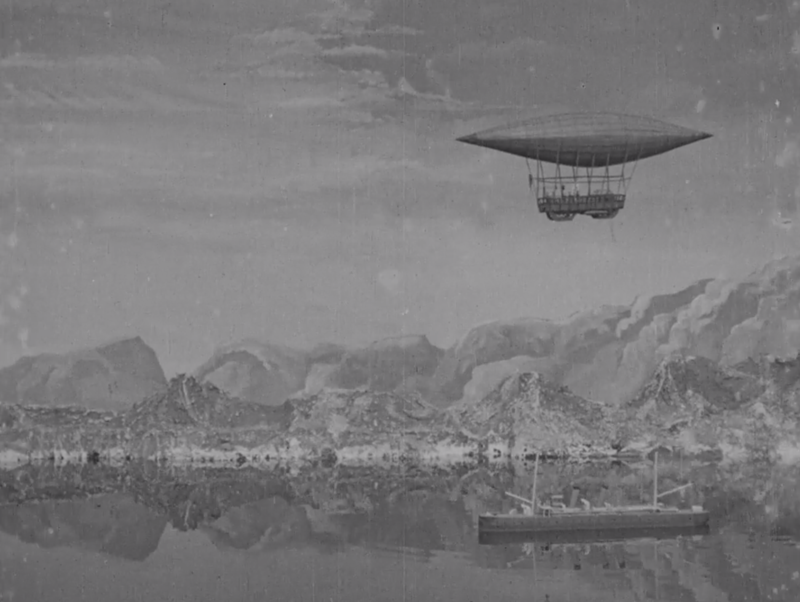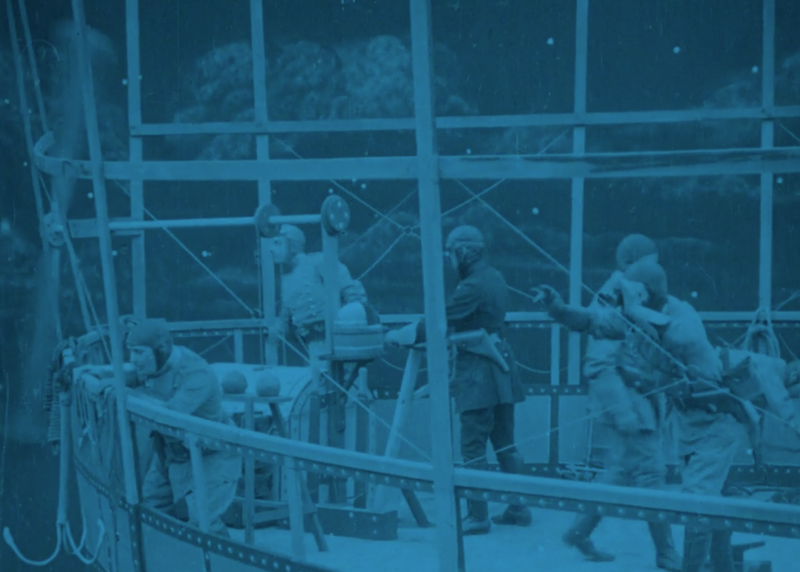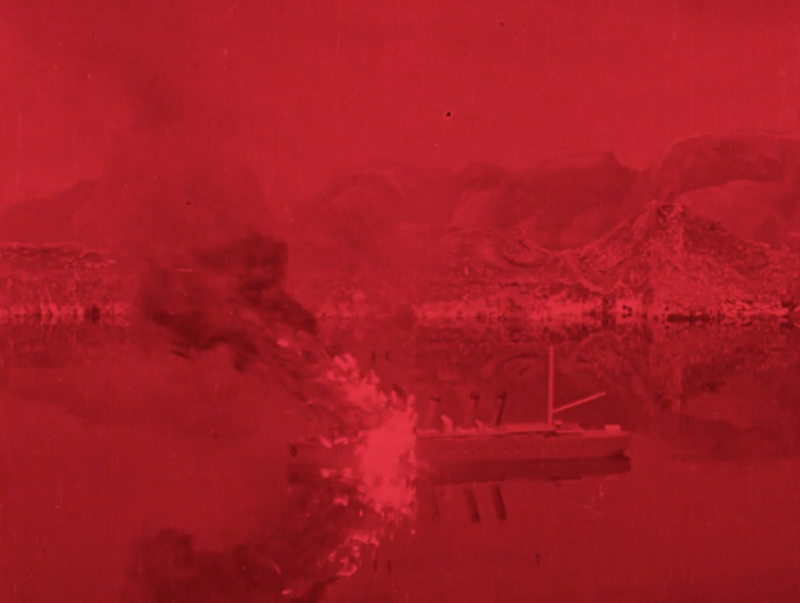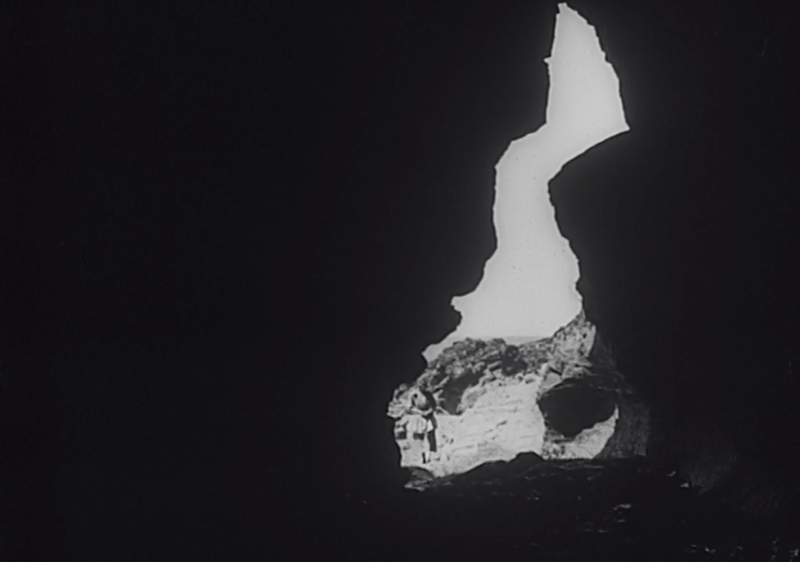Le Voyage Dans La Lune (or, A Trip To The Moon), directed by Georges Melies in 1902, is perhaps the most well-known of all early films, especially the image of the moon with a spaceship in its eye.
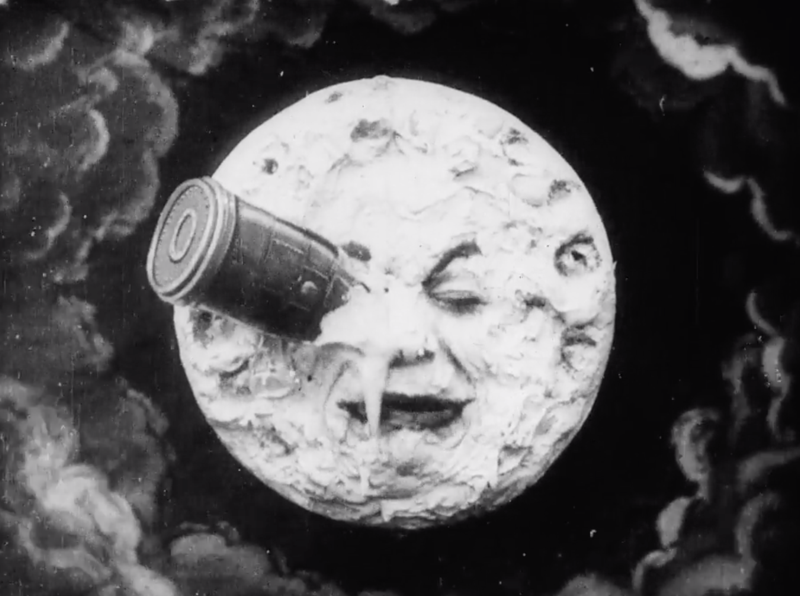
I’ve always quite liked the way that the conventions, limitations and constraints of early film-making led to a similarity in style and appearance to early computer games (especially adventure games), which were the result of a very different set of technical problems, but which utilised very similar solutions.
So here you get static single screen sets with lavishly painted backgrounds, through which the characters move one scene at a time (such as the two images immediately below).
Partly this would have been due to the limitations/difficulties of the filming process itself (movement juddering, smooth camera control, re-focusing, etc), partly for stylistic reasons (the recreation of a theatre-style viewpoint) and also because of the cost, size and other logistical problems in the making, building and staging of sets.
These are evoked, in a way, by the static pre-rendered screens of something like Dizzy or Monkey Island, which allowed for a much higher graphical detail at the expense of screen movement/scrolling, the number of moving characters/enemies, and so on.

The more obvious lineage, of course, is that of Le Voyage Dans La Lune’s imagery being referenced and replicated in the 120 years since in everything from subsequent HG Wells and Jules Verne adaptations, to Tintin and Flash Gordon (the crashed spaceship and the hopping Selenite are very similar to the initial landing scene and the strange green monster that gets incinerated a bit later in the 1980s version), right the way up to The Smashing Pumpkins (I’ve often wondered if that video was the creation-myth of steampunk).

When they return to Earth, the scene where they crash into the sea is very similar to the corresponding scene in The Automatic Motorist, even down to the newts swimming about.
(I’d noticed the more obvious homages to this in The “?” Motorist and The Automatic Motorist when I watched them, but had missed this one)
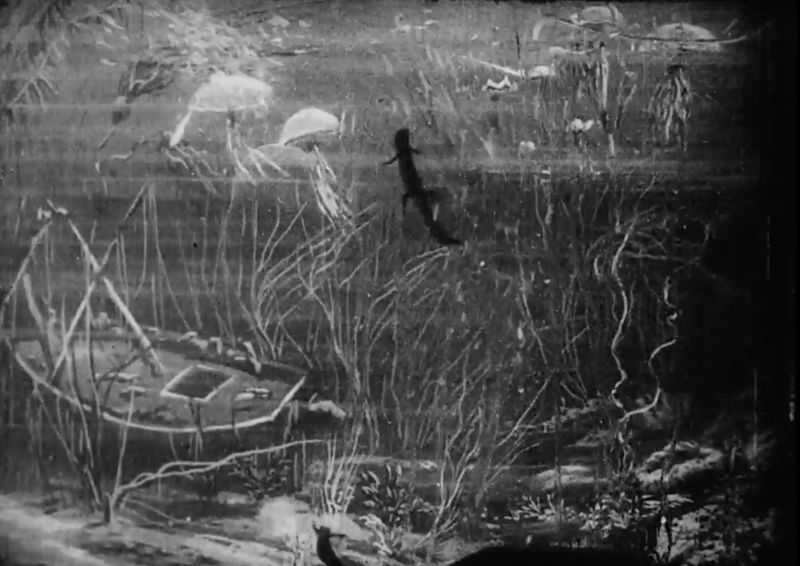
I also watched Mister Moon, a 1 minute promotional video for the musical hall star Percy Henri’s comedy act, filmed in 1901, and which also features a terrifying human-faced moon (and nothing else at all, in this case).

Unsurprisingly, I found this utterly terrifying.
__________
Notes
1. I watched both of these on the BFI player again – Le Voyage Dans La Lune; Mister Moon.
2. The crashed spaceship image from A Trip To The Moon is one I’ve, erm, well, stolen repeatedly over the years, although I’ve not yet resorted to moons with faces, thankfully.
3. I didn’t realise the BFI player was region locked to the UK, so I’ll try to add alternate links to things I’ve watched from now on
4. If I can
5. Although you might well have been glad of the chance to not see the full horror of Mister Moon, to be honest.
__________
Film Information
Title: Le Voyage Dans La Lune
Director: Georges Melies
Year: 1902
Duration: 12 minutes
Watch: BFI; youtube
Title: Mister Moon
Director: Percy Honri
Year: 1901
Duration: 1 minute
Watch: BFI; youtube
